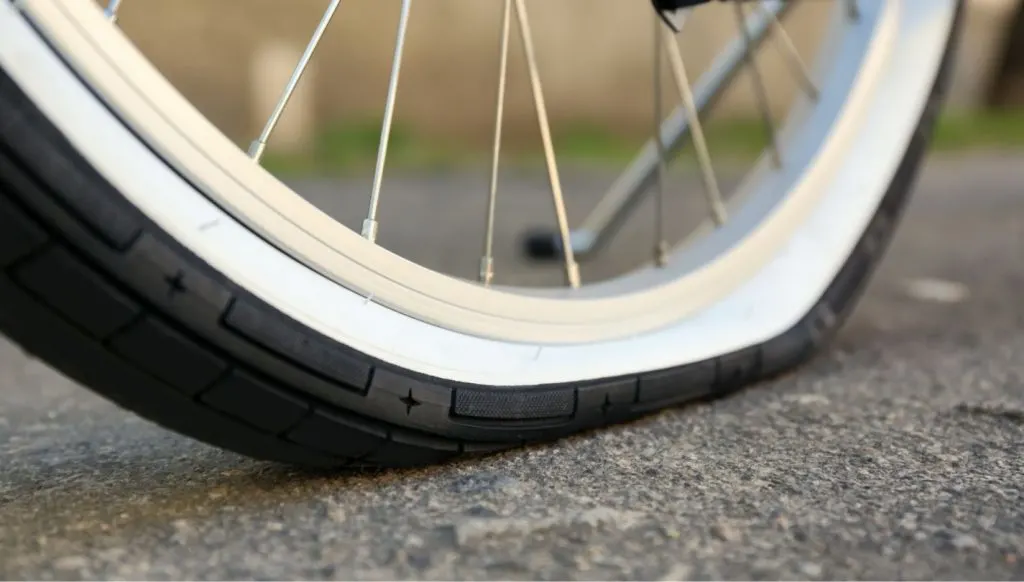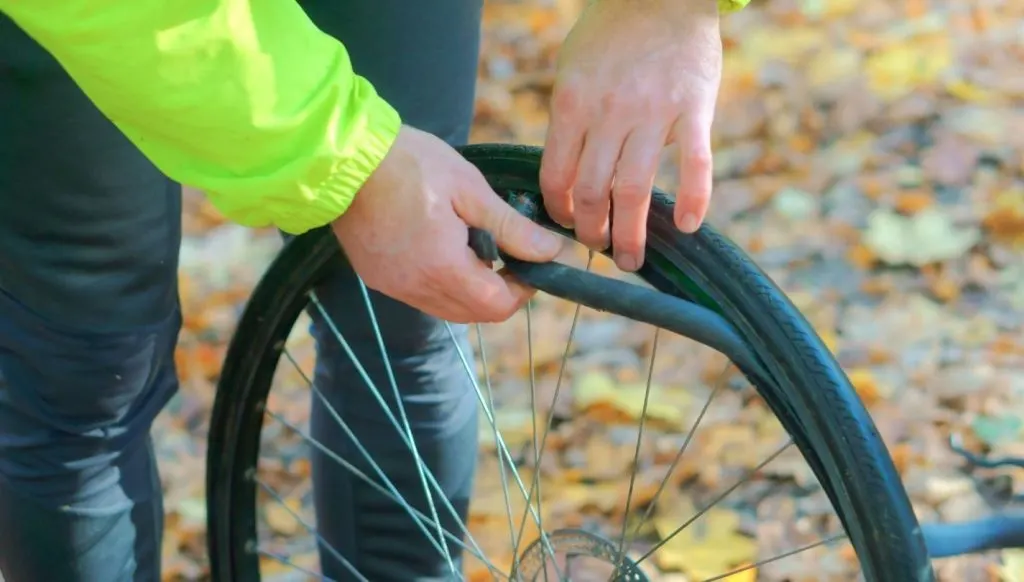
Tire punctures are an inescapable part of the riding experience; whether you are on a mountain bike, road bike, or hybrid, and cycle casually on weekends to work or do competitive riding, sooner or later, you are going to have a puncture. It’s inevitable. But are Tire Liners really a viable solution? And if so, which ones are worth using?
Tire liners are a proven solution to puncture prevention as they add an extra layer of protection between the tire and the tube. While tire liners do work, there is no existing permanent solution to prevent punctures, and tire liners do have some drawbacks.
Let’s look at how these liners work to prevent punctures and some of the brands you can buy to reduce the irritation of flat tires.
What Is A Tire Liner?
The bane of a cyclist’s existence (besides inconsiderate drivers) are flat tires. While every cyclist accepts that sooner or later they are going to have a flat, getting a flat tire, especially 35 miles from the nearest town, and no mobile signal can put a damper on your day!
While there are quite a few different methods of preventing flat tires, like tube sealants and puncture-proof tires and tubes, those can be expensive. Tire liners are a cheap and effective option to reduce the risk of flats.
A tire liner is a thick piece of flexible material – usually plastic- that fits between the tire and the tube. The tire liner sits on the tire’s inner lining and becomes a barrier between the terrain and the tube.
Many punctures are caused by nails, thorns, glass fragments, and other sharp objects lying in the road or on the trail. Keeping them from penetrating the tire may not always be possible, but the tire liner stops them from penetrating the tube and causing a flat.
How To Install A Tire Liner
Tire liners are fairly simple to install as it’s a bit like adding in a new tube, just easier. Here’s how:
- Deflate the tire
- Remove the tire from the rim
- Take out the inner tube
- Once the tire is off, you can lay the tire liner on the inside of the tire
- Make sure that the liner is centered, replace the tube and inflate it slightly to push the tire liner against the tire. (Also, this will help the tire liner settle and smooth out any wrinkles.)
Some tire liners come in a ‘one-size for all’ package, and if the liner you have is longer than the tire inside, that’s fine as you can let it overlap and add a little extra protection. Once this is done, deflate the tube and install the tire as normal.
Pros And Cons of Using Tire Liner for your Bicycle
Let’s look at some of the drawbacks of tire liners.
- They are heavy and will add weight to your bike, and an average tire liner would add about 6 oz to the riding weight. This will add some rolling resistance and require a bit more power to propel.
- They don’t work for sidewall punctures. Tire liners are designed to protect punctures from the ground. If you ride MTB in an area with many thorn bushes, they won’t stop them from puncturing the sidewall.
- They won’t stop very sharp objects. While tire liners will stop most punctures from thorns, nails, and glass, they won’t stop very sharp objects that you may ride over.
- They can’t prevent punctures caused by low tire pressures or harsh riding.
- An overlapping liner can cut the tube. Many tube repairs that had tire liners found that an overlapping liner piece cut the tube.
- They can migrate inside the tire, leaving exposed areas of the tire unprotected.
- They can cause pinch flats if not installed properly.

Now let’s look at the pros of using tire liners:
- They are very effective in preventing tread side punctures. Many users report riding for hundreds and, in some cases, thousands of miles without a puncture using tire liners.
- They are cheap and easy to install, and aren’t messy.
- Most manufacturers have tire liners made to match your wheel and tire size.
- If you have a flat, you can move the tire liner to the new tire or over the new tube, provided the liner is undamaged and installed properly.
- Tire liners don’t affect the operation of the valve or tube.
Tire Liner Brands And What They Offer
Looking at a few different brands of tire liners like Rhinodillo, Mr. Tuffy, and Slime, I’ve learned a few things about these products. Over the years, many manufacturers have entered the market with various offerings.
Some of the most popular in the market are the tire liners from Mr. Tuffy, Slime, and Rhinodillo. Let’s take a look at the 3 most popular brands and their differences…
Rhinodillo Tire Liners
These are claimed to be the top tire liner in the USA since 2015. Rhinodillo liners come with a chemical additive that increases their resistance to punctures, and they have also been added in a tapered end to prevent excessive overlap.
Rhinodillo produces tire lines in eight different sizes so you can get the right one for your bike and claim protection again from the dreaded goat’s head thorns as well as glass, nails, and other debris.
The weight added is about 4oz, which would be negligible in affecting your ride. They’re readily available from Amazon here.
Mr. Tuffy Ultra-Lite Tire Liner
Mr. Tuffy is a well-known and popular brand, and their ultra-lite tire liners offer superb protection on all types of bikes as they are available in 18 different versions!
At half the weight of the original Mr. Tuffy liners and using the same material as Rhinodillo (urethane polymer alloy), the ultra-lite has grooves in it for better traction and to prevent migration inside the tire.
A comparison between the original Mr. Tuffy, the Rhinodillo Clean Motion, and the Ultra-Lite’s showed the ultra-lite to be thinner (0,8mm/1mm) than the Rhinodillo at 1.2mm. They are also significantly lighter (105g) than the original Mr. Tuffy ( 154g) and the Rhinodillo (136g)
The advantage of a much lighter tire liner would be evident while riding, as the rotating mass on each wheel, would be significantly lower. You can also find them on Amazon here.
Slime Tire Liners
Another popular brand is the tire liners from Slime. They’ve been around since 2010 and are also lightweight, coming in around 136g. They weigh the same as the Rhinodillos and are also cheap and easy to use and install.
Slime offers a one-size-fits-most tire product while the others have liners to fit wheel sizes.
One of the common problems with Slime is that they tend to overlap, which can cause the slicing of tubes during riding. While the overlap would stick to the existing tire liner, it may be better to trim it to reduce the risk. You can find the slime tire liners on Amazon here, and I would consider it the budget option of the 3.
If I were to choose out of the 3 tire liners above, my top pick would be the Mr Tuffy Ultra Light Liner (Amazon link). It’s the most efficient and effective of the three.
Conclusion
There is no doubt that tire liners work to prevent punctures, and depending on the riding you do, it is clear that no tire liner is 100% effective against punctures, but they certainly do stop most sharp objects from getting through and ruining your ride.
